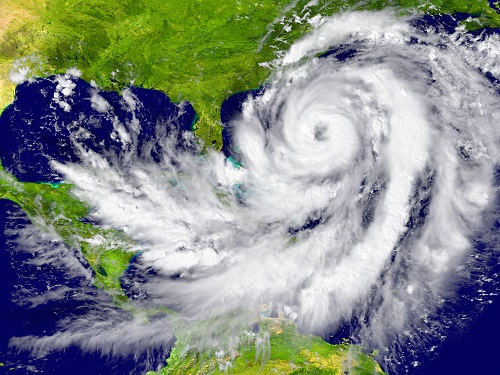Many businesses fail to prepare for major storms because they seem like a remote possibility until they’re right in front of you. Hurricanes are the most common natural disasters in North Carolina, and if your business is in the line of one, it can have a big impact.

There are two levels of preparation that businesses can make for major storms. The best preparation is an emergency plan that is made as a precautionary measure, long before any specific emergency is on anyone’s radar. There’s plenty you can do to insulate yourself from the worst consequences even if you don’t have a written formal plan to pull out as the threat of a disaster approaches, however. In many cases, the difference between a business that survives the storm and one that doesn’t is the preparatory work they do in the three to five days before the storm hits.
Here’s what you can do during each phase of emergency planning:
Months in advance:
Data
The most important asset most companies own is their data. There’s not enough time to build a backup plan and test it in the days before a storm. If you’ve got a tested data restore system in place, you’ll have the time you need to focus on everything else in this guide.
Technology
If a storm isn’t catastrophic, technology can help make a storm’s immediate aftermath much less painful. Make sure your company has the technology in place to allow employees whose jobs could be performed remotely to access the data they need from their homes in case the roads are impassable. Businesses with high uptime requirements should consider a backup internet resource; this makes it more likely you’ll have service during a storm, and it also provides a backup during any other outages your internet provider experiences throughout the year.
Physical/Structural
Identify anything around your building that could be blown into it and cause damage. These things will need to be as well-secured as possible in the days before the storm.
Identify your flooding risk, both to your building overall and to individual rooms within the building. Determine which rooms are safest during a period of high winds. If there are any dangerous chemicals or potential electrical hazards in or around the building, make sure they’re secured as well. Note which structures will need to be covered or secured (such as windows or roof components) to minimize flooding risk.
Staff
A plan can make your company a resource rather than a burden to your employees in the event of a severe storm. Make sure your employees know the basics of how to stay safe during the storm’s impact. Build and distribute a communications plan to enact if the company’s landline phone network is disabled. Be ready to provide food and potentially shelter, especially for employees who will be expected to work in the immediate aftermath of the storm.
Customers
Customer communication is critical in the first days after a storm, especially if you serve customers far outside of the impacted area. Make sure you have a plan to contact customers and inform them of the status of the goods and services you provide them. Keep in mind that your company’s landline phone and internet services may be unavailable during this time.
In the Days Before the Storm:
Data
While it’s too late to build a comprehensive data plan in the days before the storm, it is still possible to backup the most critical data, such as financial and customer data, to an off-site location.
Technology
Move all computer equipment off the floor if possible. Test your UPSs by making sure they support your computers when the UPS is disconnected from its power source. Most importantly, make sure your technology team has tested your server’s UPS and its ability to perform a safe automatic shutdown of your equipment if it loses power.
Physical/Structural
Secure any heavy or sharp items around your building likely to fly during high winds. Move expensive resources to low flood risk parts of your building. Take care of any damage-prone parts of the building, including windows, gutters, and the roof.
Staff
Build a phone tree for communication in the event that company phones or emails are disabled. Make sure people know how to report their safety, and where to report to in the event that the building is damaged or inaccessible. Assign responsibilities such as employee and customer communication before the storm hits, and make sure the employees responsible for this don’t need access to the company network for contact information.
Customers
Try to let them know how you’ve been impacted as soon as possible. Keep them informed on your status during the recovery phase, and let them know what the expected impact to their service is. Finally, remember that most people are compassionate, and your customers are unlikely to punish you for events beyond your control if you demonstrate that you planned well and are working hard to restore operational capacity quickly.
More information:
Ready.gov Hurricane Ready Business Toolkit
Ready.gov Crisis Communications Plan
